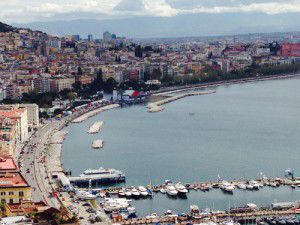5 tips for beginners in Japanese
Adam, 15, recently spent two weeks at EuroTalk for work experience. He’s passionate about languages and is currently learning Japanese. Here are his top tips for other beginners.
In November 2012, I decided to start taking Japanese lessons once per fortnight. As a younger learner, I thought it might be interesting for you to see some challenges that I have already faced while learning. If this post was about a language like French, quite a lot of the tips would be generic and applicable to other European languages, such as Spanish or German. Therefore, I hope that most of my tips will remain unique, just like the Japanese language.
Here are 5 tips for starting Japanese, from the viewpoint of a beginner!
1) Consolidate your kana before tackling Kanji
When I started to learn, I was pretty frightened at the prospect of learning kanji. In fact, I only started to learn kanji about nine months after starting, because my teacher advised me to gain a basic knowledge of the sound system, grammar, vocabulary and kana alphabets before learning. She was absolutely right – I couldn’t have imagined being able to pick up any of the theory behind kanji without the basic grounding first. Often, the On’Yomi reading is written in katakana. Considering I had been learning for 9 months at the time, my katakana knowledge was pretty poor, which inhibited some of my kanji learning. Getting a basic knowledge of Japanese is definitely a must before learning kanji!
2) Choose your learning materials wisely
There are a variety of Japanese learning materials out there, ranging from internet courses to books. It is important to choose learning resources that can cover every aspect of the language, without leaving any gaps in your required knowledge. This is why I would recommend the ‘Japanese for Busy People vol. 1’ book. It covers grammar, various verb forms, vocabulary, information on the culture, particles, conjuctions, sentence structure and counters. Another important feature is that it features no kanji, allowing you to consolidate your knowledge of kana and general understanding of the language. One negative aspect could be the fact that the book is quite business-orientated. In terms of grammar, this is fine, and means that politeness is emphasised throughout. However, some of the vocabulary might not be useful to some learners. For me, it’s quite funny to be able to tell a taxi driver how to get to the main branch office! Otherwise, you could use online vocabulary resources and of course don’t forget the uTalk app!

3) Don’t overload yourself with kanji readings!
When I learn languages, I want to know everything when I first come across it, even if it is really complex. For example, when I started to learn German, I was really eager to learn the perfect tense within the first few lessons. It was exactly the same as in French – just use ‘haben’ and add the past participle, right? Of course I failed, because I put the past participle straight after the auxiliary verb, rather than at the end of the sentence. In Japanese, I wanted to learn all the readings of a kanji as soon as I had learnt it. Eventually, I would have probably ended up using it incorrectly because I had just memorised the words associated with that kanji, without ever encountering them in a sentence!
Instead, you might want to try and learn a new kanji of a word that you have encountered frequently, rather than learning multiple new words from a kanji. In my Japanese book, I have a section for all the vocabulary that I need to learn for homework. I started to look up the kanji for each of those words. If I came across a kanji that I already knew, I would right the corresponding word down, with its kanji written next to it. Furthermore, if an unknown kanji came up a lot, I would write it down with the familiar readings next to it. This method ensures that I learn the readings of words that I am already familiar with.
4) Be organised
When learning Japanese in particular, I like to keep a routine to ensure that I learn kanji, vocabulary and do homework well. Some learners might not like repetition, but I think it’s one of the best ways to learn. By revising for 10 minutes every evening and recalling the information in a mini-test the next day, I can make sure that I remember vocabulary, grammar and kanji well. I like to take advantage of the brain’s ability to work better after waking up. This means that I only learn new words in the morning, during weekends, and revise words in the evening. Furthermore, I think it’s also important to test yourself after a longer period of time following the learning of a word, to ensure that you have maintained the word in your mind! However, it’s also important to state that our brain works even better passively, so doing some occasional Japanese writing, reading and listening is good when learning. You might pick up some new vocabulary without even trying! Try and be organised by placing short revision sessions, mini-tests and activities consistently over an allotted period of time.
5) Make your own learning resources
Lots of people have different methods when learning. I am quite old-fashioned, and approach language with the ‘no pain, no gain’ approach, using repetition and regular tests. This means that I need to locate places to find materials, suitable for my way of learning. Owing to the surprisingly low amount of Japanese kanji resources online, I recently made my own kanji grid on MS Word with 19 rows, and 15 columns. I could then put the kanji and their Japanese readings on the top row, with room for 15 kanji on one grid. I then had the perfect number of rows to have 10 boxes to practise each kanji, 7 boxes to test myself on one kanji everyday, each day of the week, and then had one box left over to test myself 7 days later. This is an example of using a self-made material, suited to my way of learning. I find that everyone has their own way of learning kanji, whether it be using flashcards, writing it repetitively or doing online exercises. Find the best way for you to learn Japanese!
I really enjoyed writing this post, so I hope you enjoyed reading about this. Even though I’m very passionate about language, I still make mistakes, so please forgive any potential inaccuracies in this post!
Adam
A little language goes a long way
As marketing manager here at EuroTalk, it’s my job to tell everyone how great our products are. But from time to time, I need to use them for myself and I get reminded all over again just how useful they are.
 Last weekend I spent a few days in Naples, Italy. I was determined before I left to try and speak a little bit of Italian; after all I spend most of my time telling other people they have to speak the local language, not to mention it just seemed like the polite thing to do. As it turned out, it was also quite necessary because to our surprise, although it’s a pretty touristy area, not many people spoke English. Fortunately I’d come prepared with uTalk on my phone, and it turned out to be invaluable.
Last weekend I spent a few days in Naples, Italy. I was determined before I left to try and speak a little bit of Italian; after all I spend most of my time telling other people they have to speak the local language, not to mention it just seemed like the polite thing to do. As it turned out, it was also quite necessary because to our surprise, although it’s a pretty touristy area, not many people spoke English. Fortunately I’d come prepared with uTalk on my phone, and it turned out to be invaluable.
I left home with no Italian at all, apart from the basics – ‘ciao’, ‘grazie’ and ‘per favore’ were the first words I tried out (all included in the free version of the app). I’d also learnt the numbers up to three in advance, so I could ask for a table in restaurants. Pretty soon I realised I also needed to know ‘una bottiglia d’acqua’ because it was quite hot and sunny (when it wasn’t pouring with rain), and some higher numbers so I knew how much money I was being asked for. So out came uTalk for a quick revision session.
The first time we went to a restaurant, the waiter spoke some English and somehow identified us as Brits the moment we walked in, so my contribution was fairly limited, although I was insistent that I wanted to say what I could in Italian. The following night, I managed to ask for the bill, thanks to a quick check of my phone. And by the last night, I was able to order dessert by describing what I wanted (‘una torta de fragole’) and was astonished and delighted when the waiter brought me exactly what I wanted without any confusion. (We also got free limoncello at that restaurant – although I think they might have given that to everyone.)
Our main challenge in Naples was figuring out the ‘funicolare’ – which, by the way, is the weirdest way I’ve ever travelled. (For those who aren’t familiar, it’s basically a little train/car that carries people up and down the mountain – but on the inside and at a 45 degree angle. It’s quite surreal.) I’ll admit there was a bit of English used when I asked the man in the station how it all worked the first time, but then after another quick check of uTalk, I managed to buy us three tickets (‘bigliettos’) from the slightly intimidating lady in the little shop next door.
None of my conversations were particularly long or profound, but every time I said something in Italian and the person I was speaking to understood me, I gained a little bit of confidence. By the time I left, I was quite looking forward to these little exchanges, and was a bit disappointed if someone talked to me in English. There were a lot of Brits around, as we were all there for the Davis Cup tennis (the less said about that the better) and we witnessed a few fellow tourists adopting the ‘talk louder in English’ approach, not to mention quite a lot more standing around looking very confused in the funicolare station. So it was quite satisfying to know that we’d made the effort; the locals I spoke to certainly seemed to appreciate it. And yes, there were a couple of occasions when they thought I knew more than I did and started chatting away in rapid Italian, but somehow I managed to fumble my way through it (‘non capisco’ – I don’t understand – is another important phrase to learn).
It’s always useful to learn a few words before you leave for your holiday, but for me the most useful thing about uTalk was that I always had access to the vocabulary – written and spoken – whenever I needed it. I wouldn’t necessarily have thought to look up ‘strawberries’ and ‘cake’ before I left, for example, so without uTalk I might have missed out on this amazing dessert. And that would have been a tragedy.
8 common language mistakes to avoid [infographic]
When you’re learning a new language, it’s easy to make mistakes. And that’s ok; it’s the best way to learn. But sometimes you might think you know what you’re saying, and actually you’ve said something very different. Here are a few examples to look out for…
Please let us know your own examples and as always, do feel free to share the infographic with others.
Infographic created by Adam (research) and Luke (design)
Embed This Image On Your Site (copy code below):
10 reasons to visit… Luxembourg
Having just returned from a short trip to Luxembourg, I thought I’d continue with our ’10 reasons to visit’ series by giving you a few reasons why you should consider a trip to this central European country.
Luxembourg may be small, but it’s certainly worth a visit, and here’s why:
1. Great links with the rest of Europe
Luxembourg is just a short, hour-long flight from London, with several airlines and airports serving Lux airport. Our return flights were only £60 with BA. Or you could easily fly or drive from most big cities in Europe. Luxembourg also uses the Euro, which is convenient for other European visitors.
2. It’s quick and easy to visit France/Germany/Belgium
Ok… so my second reason to visit a place probably shouldn’t be that it’s easy to leave it again, but hear me out! I spent five days with a friend who lives in Luxembourg city, and during that time we hopped on the train over to the border to Trier in Germany and Nancy in France for just 10 euros a time. Luxembourg’s central location and small size means it’s easy to get two or three countries for your money by taking a short drive or train ride to one of the nearby cities, and fit as much as possible into your trip.
3. Linguistic diversity
Of course, my next reason has to be language-related! This small country has THREE official languages: Luxembourgish, which is spoken as a mother tongue by almost all residents; French, which is commonly used in restaurants, shops and cafes, and German which is frequently heard in the media. English is also widely spoken. So while you’re there, you can easily practise your French or German, as well as maybe picking up a few phrases of the local language. It was definitely a good opportunity for me to use a bit of French when ordering food and drinks. (By the way, EuroTalk offer all three official languages.)
4. Food and drink
Luxembourgish cuisine is very similar to German/Austrian, with plenty of meat and potato-based dishes. I came across plenty of my favourite German dishes such as Kaesspaetzle (an egg based dish which is a little like pasta or dumplings, with plenty of cheese!), Schnitzel (breaded pork fillets) and Rosti (Swiss-style potato cakes), not to mention Apfelstrudel and cheap beer. But if heavier dishes are not to your taste, there are plenty of French and Italian influenced restaurants in the city as well.
5. Amazing architecture
Luxembourg City used to be a fortress city which was completely surrounded by high stone walls. Those walls are still there, and you can climb to the top and walk around them for an incredible view of the city. The architecture is also beautiful, with many typical cone-shaped roofs and an architectural style that mixes French and German traditions. Planning and building laws in Luxembourg are also much looser than in many other European countries, meaning almost all the houses are built in different styles and colours.
6. Museums and culture
We visited the Luxembourg City History Museum, which is only 3 euro entry, but worth every cent. The museum covers every aspect of Luxembourgish life, from exhibits on the city’s architecture, with models of the city during different periods of its existence, to an entire floor dedicated to shopping and consumer culture, a basement level which is cut into the rock that the city is built on, and loads of fascinating information about the city’s occupation by the Nazis during the WW2 era. It also has great views over the city, especially from the glass lift. The museum is a proper maze and you can get lost in there for hours and find out about all sorts of aspects of Luxembourg City.
7. Landscape and cityscape
Interestingly, the city is built around a huge canyon (for want of a better word!). You must therefore either take one of the city’s many bridges to get to the other side, or you can walk down into the canyon and explore the park, which has a small river and beautiful views. Many people go running or cycling down there, and it’s a great place to chill out or take a walk.
8. Nature is close at hand
The city is full of green spaces, including parks and the river, and you’re never more than short walk from a green area to chill out and relax. However, a short trip outside the city and you’ll be in the midst of the country’s miles and miles of relatively unspoiled countryside. Luxembourg is great for cycling, hiking and fishing or boating. There are also 400 square kilometres of nature parks, many lakes and rivers and miles of cycle routes and hiking trails. As a bonus, the city is also very bike-friendly. You can rent a bike from the Veloh scheme, and there are bike lanes everywhere so you can cycle safely.
9. Shopping!
Unfortunately, Luxembourg isn’t the cheapest place to go on holiday. Wages there are high and the city’s livelihood is largely based on banking. As a result, food prices, for example, are relatively high. However, Luxembourg City and some of the surrounding cities are great places to shop, especially if you’re interested in high-end boutiques and designer labels. If you’re looking for flea markets or bargain hunting then it’s probably not the place for you, but there are several quaint little artisan chocolate, cheese and wine shops, as well as a wide range of designer stores which are worth a look, even if you’re only window shopping.
10. Visit the only remaining grand duchy
Luxembourg is not only one of the smallest sovereign nations in Europe, it’s also the world’s only remaining grand duchy, meaning it’s headed by a grand duke rather than a king/queen or president. You can see the grand duke’s palace in the centre of the city, and his son was recently married in a huge public ceremony which was watched by most of the nation. You can also see the country’s main legislative building, the Chamber of Deputies, right in the city centre.
Alex








